- Home
- Joyce Carol Oates
The Man Without a Shadow Page 23
The Man Without a Shadow Read online
Page 23
“What does that mean? Exactly what the words say.”
“That we are—‘we’?”
“That we have unique and definable and unvarying identities. That, in a manner of speaking, ‘we’ exist.”
“But if we are not ourselves, who are we?”
“Who are we? You might better say what.”
“What are we?”
“Exactly. Science has only just begun that exploration. Neuroscience is the way in—but only the way in.”
The interviewer is perplexed. The interviewer is embarrassed. The interviewer would be insulted except that Professor Sharpe speaks so politely, so earnestly and so gently.
“ELI? MR. HOOPES? Is—something wrong?”
She has slipped the Celtic ring on the third finger of her right hand. She knows that E.H. will not see it, or, if he sees it, will not identify it, and yet—it gives her pleasure to be wearing it, at the university and at the Institute.
“If you’d rather not begin our tests right now, Eli—we can wait. Would you like to wait? Would you like to sit by the window here, and write in your notebook? Make some drawings? What would you like to do, Eli?”
He does not seem to care for her, this morning. He does not seem to “recognize” her.
His feeling for her, his sexual attraction for her—seems to have vanished. Is this possible?
He is not a youthful man any longer. He is “older”—an older gentleman as the medical staff calls him.
Margot is concerned. Margot is frightened. It has not ever occurred to her—not once in more than twenty years—(or if it has, she has forgotten)—that the wonderfully cooperative amnesiac subject might one day refuse to cooperate with researchers. Such a possibility had never occurred to Milton Ferris, she is sure.
His eyes on her, neutral. Courteous, yet cool.
He does not know her. He has never seen her before.
No rings on his fingers yet unconsciously he turns an (invisible) ring on the third finger of his left hand.
“Thank you, Doctor.”
Doctor. Why does he call her that! She is not wearing a white lab coat or a stethoscope. By this time he should know the distinction between the research psychologists who are studying him and the medical staff at the Institute . . .
Except of course, Elihu Hoopes can’t know.
Margot is undecided how to proceed. She might simply wait—an hour, a few minutes—and see what develops. Certainly, she is not going to give up and go home.
She has planned an important battery of tests for this week, and will be seeing E.H. three days in succession. She is working with several young associates and a colleague, an associate professor at the university, with whom she has designed these new tests based upon classical conditioning—“delay conditioning” and “trace conditioning.” These are complicated tests involving much repetition and overlapping, as they are designed to measure subtle gradations in memory. It will not be helpful if the amnesiac subject isn’t fully cooperative, or if he is distracted by a mood.
(Elihu Hoopes, distracted by a mood? Margot wonders what this could mean.)
Margot observes how one of the nurse’s aides approaches E.H., with a bright smile. And she sees how E.H. responds. In his face a light like a smoldering fire that flares up at the sight of her.
“Mr. Hoopes, you wantin to take a little walk? Out where you like it, outside? I c’n take you, Mr. Hoopes.”
Caramel-skinned girl, exotic and beautiful, very young. Oily black hair in tight cornrows plaited on her head.
Margot Sharpe sees, and looks away pained. Turning the Celtic ring on her finger.
THE TESTS. HAND-EYE coordination. Rapidity of reflexes.
In E.H., these are surprisingly good, for E.H. has been an athlete for much of his life. But if he is instructed in a new skill, that in some way conflicts with an older skill, he will have difficulty mastering this skill even when it is a “simpler” skill than the original skill.
Margot is experimenting with intervals between repeated tests. She is discovering that motor-learning experiences seem to be consolidated in the amnesiac subject’s non-declarative memory if there is an interval of between three and four hours; before this, the memory is incompletely consolidated. And if the interval is too long, the memory fades.
It isn’t surprising that E.H.’s “mastery” of a skill is disrupted when he is required to learn a secondary motor skill within several hours; the second skill may be retained, but the first is lost.
However, the first skill can be more readily regained, if the subject is again instructed in it. Though the subject may remember nothing of the original instruction consciously, his eye-hand coordination improves at once, and he will demonstrate an ease with the procedure that suggests that, indeed, he is “remembering.”
Margot Sharpe and her colleagues have the idea of returning to “intact priming” experiments performed with E.H. eight months before, and running them a second time; at another eight-month interval they will run them again. It is gratifying to discover that E.H. can perform virtually as well as a normal individual in recalling words cued with the first several letters of a word, so long as he is not asked to “remember” but only to say the first word that comes to mind—“Just speak, Eli! Don’t think.”
When E.H. is asked if he has ever performed one of these priming tests before, or a test in which he identifies a sequence of only partially drawn figures, his answer is invariably: “No! Not me.”
Yet, given a pencil, E.H. completes the sketchy outlines of an octagon, a many-branched tree, a diamond, an orange divided into quarters, a church with a spire. As the test progresses the figures become less distinct, yet the amnesiac subject can complete most of them, like a sleepwalker making his slow, certain way with his eyes open; eventually, when no more than one-tenth of the outline is provided, that to the normal eye looks like nothing more than isolated, broken lines lacking coherence, the amnesiac subject can complete the figures with his pencil.
E.H. is startled to see a figure materialize beneath his fingertips. “Hey! It’s a—what is it?—‘rhomboid.’”
Margot teases him: “You’ve never done these tests before, Eli? Yet you are doing them so well—how do you explain it?”
“You explain it.”
Eli is further flattered by being told that other subjects have failed to complete the drawings as he’d done.
E.H. smiles as if exulting in secret knowledge. As if thinking—But of course I know how to do this, I have mastered it many times in the past.
Margot knows that E.H. is simulating such knowledge. The amnesiac wishes to provide the examiner with the sort of socially-determined response that would seem plausible in a normal subject; in E.H., this response is a confabulation.
Margot has explored E.H.’s strategy of confabulating. The subject is infinitely fascinating to her as a (possible? probable?) foundation of all human belief, mythology. Margot will ask E.H. why he is wearing his watch on his right wrist instead of his left, and E.H. will say matter-of-factly, “Because—I always wear my watch on my right wrist.” (In fact, one of Margot’s assistants instructed E.H. to switch it to the other wrist earlier that day.)
Under the guise of an experiment Margot pushes the Celtic ring onto one of E.H.’s fingers. She tells him it is a “present from a friend.” And an hour later when E.H. is asked about the ring he stares at it as if he has never seen it before. (Indeed, he has never seen it before.) He is likely to say, “This is an old family ring. This is a ring I always wear.”
Another time, E.H. will say, “This is my wedding ring. My wife and I have identical rings.”
“And—where is your wife now, Eli?”
“She would be in our apartment at Forty-Four Rittenhouse Square. She would be waiting for me.”
Margot is intrigued by this reply in the subjunctive mood. Would be.
Yet, she’s rather hurt by her lover’s remark. As if he’d slapped her lightly with the back of his hand in rebuk
e.
“But—what is your wife’s name, Eli?”
Her question is faint, faltering. E.H. bares his teeth in an obstinate smile.
“What d’you think it would be, Doctor? If she’s my wife she is ‘Mrs. Hoopes.’”
THOUGH E.H. IS the amnesiac subject of Project E.H., from time to time Margot Sharpe and her colleagues work with other impaired individuals at the Institute as well. And they work with “normal” individuals, student volunteers at the university; these “normal” individuals are their control group.
“Semantic” knowledge, “episodic” knowledge. The one is factual, impersonal, and non-contextual; the other personal, autobiographical, and contextual.
In E.H., all “memory” acquired after his illness in July 1965 has vanished. That is, all declarative memory.
E.H.’s more general memory, consolidated before his illness, remains more or less intact, and is considerable; he was a highly educated and highly intelligent man. But his personal memory, Margot thinks, has begun to seriously corrode. By the time the amnesiac subject is in his sixties, his recollection of his early, pre-amnesiac life has become unreliable, at times surreal. (E.H. will say, “Did that happen? Or did I dream that happened?”) Tests administered to the amnesiac subject at two-year intervals, drawing upon childhood and boyhood memories, record this decline. But why is this happening? Why, when E.H.’s brain hasn’t been further injured? It is Margot’s theory that E.H.’s personal memory is fading or breaking up because he has no way of consolidating it, as normal individuals do; even if E.H. recalls an event or a person distinctly he can’t consciously preserve the memory for retrieval, for he has no present-time memory.
Without fail E.H. can remember historic events: Pearl Harbor, Hiroshima, the surrender of Japan on September 2, 1945. The Kennedy-Nixon campaign and election of Kennedy. Cuban missile crisis. But the connective tissue between these events and his own, personal life seems to be decaying. When he speaks of such events it’s as if they occurred without his consciousness. Wryly he says, “It’s like a bad job of caulking. Falls apart.”
In a separate category of tests administered by psychologists specializing in sleep, E.H.’s sleep patterns have been monitored. EEGs have recorded electrical activity produced by neurons in his brain. E.H.’s presumably “normal” sleep is often disturbed, Margot Sharpe has observed. (She has spent many hours beside E.H. in the sleep lab at the Institute, taking meticulous notes. These have been deeply satisfying hours—an unspeakable intimacy.) The sleeping amnesiac grinds his teeth, squirms and shudders and thrashes his limbs. He mutters incoherently—he curses in a voice Margot has never heard before, and which pierces her, thrillingly. When wakened by the examiner during REM sleep and asked what he is dreaming, E.H. will blink his eyes in confusion before saying, in a way that suggests the fluency of a familiar anecdote and not the more halting recollection of an actual dream—When I was a boy and it was Christmas . . . When we were going to my grandparents’ house . . . It was somewhere in the mountains, but there were horses . . . It was a happy time, but there was a big snowstorm . . .
The sleep examiners record E.H.’s responses as accounts of dreams but Margot Sharpe believes that they are simply confabulated memories. The amnesiac can’t remember his dream scant seconds after he has been wakened and so he invents a plausible-sounding dream, or draws upon an anecdote out of his past, in itself corroded by time. From the EEG monitor it appears that the amnesiac is dreaming as if normally but his dreams evaporate even more rapidly than the dreams of the “normal.” Eager to placate his examiners, genial and gentlemanly Elihu Hoopes provides them with neatly described dreams. Margot has experimented with putting suggestions to E.H. before his sleep to see if his dreams might be influenced but there appears to be no more memory in his unconscious brain than in his conscious brain.
It is an exciting theory of Margot’s that the amnesiac subject E.H. is haunted by obsessive memories which he can’t fix in place or exorcise, since he lacks the present-time ability to evaluate them. Nor is it clear (to examiners, to him) whether these are actual memories, quasi-memories, or frankly false memories that have corroded his identification with the person he’d been before his illness. Thus, his obsessive drawing in the sketchbook—that is, in his current sketchbook. E.H. has run through numerous sketchbooks in the years Margot has worked with him.
In her amnesia logbook Margot will speculate:
How do we know who we were, if we don’t know who we are?
How do we know who we are, if we don’t know who we were?
Margot escorts E.H. from the sleep lab on the first floor of the Institute to the more familiar fourth floor. When they walk together in this public place, E.H. seems to take the lead—definitely, you would not guess from E.H.’s stride that he has not the slightest idea where he is or where he is going; but he is acutely sensitive to the motions of the woman beside him, and can anticipate her turns. When he sees the bank of elevators, he moves to them unhesitatingly. Margot notes how E.H. prepares to exit the elevator at the fourth floor as if instinctively; yet, if you ask E.H. which floor he is going to, E.H. will shrug irritably—“Who knows? Where it stops.”
Or he will say more genially, “Doctor, you’re the doctor. You have the answers.”
MARGOT PLACES HER slender hand beside E.H.’s larger, big-knuckled hand.
“Look, Eli! We’re wearing identical rings.”
It is the end of the day. It is the happiest time in the day.
E.H. is delighted. E.H. examines the rings with care.
“Are you my dear wife, then? My dear wife is a doctor in the hospital here?”
“I am not a doctor, Eli. I am—yes, I am your wife—but it’s a secret, and no one must know.”
“But why? Why is it ‘no one must know’?”
“Because we want to tell them at a later time, darling. Because it’s our secret right now.”
“But—why is it a secret? I don’t understand.”
“Because your family would not approve.”
Margot can think of no other reply. She regrets having spoken recklessly, and she regrets, or halfway regrets, having slipped E.H.’s ring on his finger, and her matching ring on her finger.
E.H. shrugs disdainfully. His fingers twitch as if he’d like to hit someone.
“My family?—the ‘Hoopeses’? They are all dead, and gone to Hell.”
Margot is astonished. “But why, Eli? ‘Gone to Hell’—why?”
“They were building a big department store there. The Emporium in Hell.”
E.H. speaks in so solemn a manner, Margot understands suddenly that he is joking. She feels a wifely twinge of indignation.
“Oh, Eli! That is not funny.”
AT LAST IN February 1993 E.H.’s brain is “mapped.” The Institute has acquired an MRI scanner and E.H. is one of the first neurologically damaged patients to be subjected to it.
Margot Sharpe accompanies E.H. to the Radiology unit. She has been awaiting this occasion for years. She is excited about learning at last what is physically wrong with E.H.’s brain even as she is fearful for her lover: she is fearful of what the brain mapping will reveal. More than thirty minutes E.H. endures the arduous procedure as Margot waits outside the windowless chamber. Badly she would like to be with him, to hold his hand and comfort him as he lies strapped inside the machine like a corpse while noises loud as thunderclaps sound erratically in his ears.
In the chill of Radiology no one recognizes Margot Sharpe. No one seems to know who “E.H.” is—how distinguished a patient this tall courtly silver-haired gentleman with the faint, perplexed smile.
Repeatedly E.H. has asked where is he being taken?—and repeatedly Margot has told him that he isn’t leaving the Institute but going just to another floor to have his brain “scanned.”
And each time E.H. has said, tapping his head: “Well! Let’s hope they can find something in here to scan.”
Afterward E.H. is escorted unsteadily from the cha
mber, blinking like a man utterly lost. He has been wearing earphones to shield him from the abrasive clanking noises. It occurs to Margot that her dear friend has been shielded from such extreme surprises for years—his life has been carefully monitored by her, as by Lucinda Mateson.
Margot comes quickly forward to take his arm. He has no idea who she is but he sees that she is very concerned for him, as a wife might be, and she isn’t wearing a uniform like the others.
Excitedly he calls her “dear”—“darling.” Excitedly he tells her that he has been traveling somewhere far away—“And I was traveling in time, too. God damn, I forgot my camera!”
Later, upstairs in Neuropsychology, E.H. complains of a headache and a “strangeness” in his head. And still later, when he has forgotten the MRI ordeal entirely, he jokes to Margot: “You know, Doctor—I think they ‘sterilized’ me today. I don’t think I signed a waiver, so I can sue the bastards.”
SO VERY TIRED! A hole has been bored into his skull, a piece of bone has been removed like a jigsaw puzzle-piece, and the delicate dura has been pierced. Can’t recall why this terrible surgery was performed on his brain but knows it is irreversible.
A man’s brain has been touched by strangers. Lights have been shined into the recesses of his soul. He has been turned inside out like a rubber glove, and tossed aside.
You saw nothing, Eli. You’ve been dreaming.
Go back to bed, Eli! There is nothing here.
“Mr. Hoopes? Are you feeling strong enough to get up? If you could swing your legs around here . . .”
He is being helped to his feet. He has lain flat on his back inside a sleek metal coffin and now he is being helped to his feet.
His knees are weak, his head feels as if air has been pumped into it—ever more air, ever more pressure.
Don’t look. You didn’t see.
There is nothing to see.
THE fMRI RESULTS are as Milton Ferris had hypothesized in 1965: the amnesiac’s brain is severely impaired in the region of the hippocampus and the parahippocampal gyrus (including perirhinal and entorhinal cortices); also damaged, less severely, are the amygdala, and parts of the temporal lobes. Other regions of E.H.’s brain (cerebral cortex, parietal lobe, cerebellum) appear to be reasonably normal.

 Starr Bright Will Be With You Soon
Starr Bright Will Be With You Soon My Heart Laid Bare
My Heart Laid Bare A Fair Maiden
A Fair Maiden The Doll-Master and Other Tales of Terror
The Doll-Master and Other Tales of Terror Wild Nights!: Stories About the Last Days of Poe, Dickinson, Twain, James, and Hemingway
Wild Nights!: Stories About the Last Days of Poe, Dickinson, Twain, James, and Hemingway Two or Three Things I Forgot to Tell You
Two or Three Things I Forgot to Tell You Because It Is Bitter, and Because It Is My Heart
Because It Is Bitter, and Because It Is My Heart Missing Mom: A Novel
Missing Mom: A Novel The Gravedigger's Daughter: A Novel
The Gravedigger's Daughter: A Novel American Appetites
American Appetites Black Dahlia White Rose: Stories
Black Dahlia White Rose: Stories Zombie
Zombie Soul at the White Heat: Inspiration, Obsession, and the Writing Life
Soul at the White Heat: Inspiration, Obsession, and the Writing Life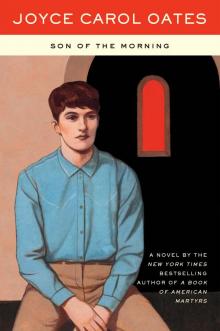 Son of the Morning
Son of the Morning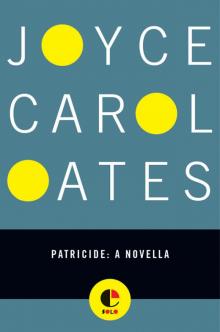 Patricide
Patricide Snake Eyes
Snake Eyes Wonderland
Wonderland In Rough Country: Essays and Reviews
In Rough Country: Essays and Reviews Little Bird of Heaven
Little Bird of Heaven The Haunting
The Haunting The Accursed
The Accursed My Sister, My Love: The Intimate Story of Skyler Rampike
My Sister, My Love: The Intimate Story of Skyler Rampike Dis Mem Ber and Other Stories of Mystery and Suspense
Dis Mem Ber and Other Stories of Mystery and Suspense You Can't Catch Me
You Can't Catch Me Daddy Love: A Novel
Daddy Love: A Novel Broke Heart Blues
Broke Heart Blues I'll Take You There
I'll Take You There Mystery, Inc.
Mystery, Inc. We Were The Mulvaneys
We Were The Mulvaneys The Lost Landscape: A Writer's Coming of Age
The Lost Landscape: A Writer's Coming of Age Evil Eye: Four Novellas of Love Gone Wrong
Evil Eye: Four Novellas of Love Gone Wrong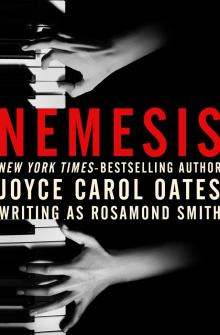 Nemesis
Nemesis Beautiful Days: Stories
Beautiful Days: Stories On Boxing
On Boxing Mudwoman
Mudwoman Hazards of Time Travel
Hazards of Time Travel Night-Gaunts and Other Tales of Suspense
Night-Gaunts and Other Tales of Suspense Mysteries of Winterthurn
Mysteries of Winterthurn New Jersey Noir
New Jersey Noir Sourland
Sourland Blonde
Blonde The Corn Maiden: And Other Nightmares
The Corn Maiden: And Other Nightmares The Oxford Book of American Short Stories
The Oxford Book of American Short Stories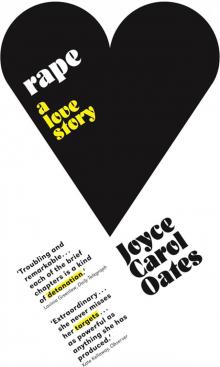 Rape: A Love Story
Rape: A Love Story Lovely, Dark, Deep: Stories
Lovely, Dark, Deep: Stories After the Wreck, I Picked Myself Up, Spread My Wings, and Flew Away
After the Wreck, I Picked Myself Up, Spread My Wings, and Flew Away Freaky Green Eyes
Freaky Green Eyes Night, Neon
Night, Neon I Am No One You Know: And Other Stories
I Am No One You Know: And Other Stories Black Water
Black Water Expensive People
Expensive People The Falls
The Falls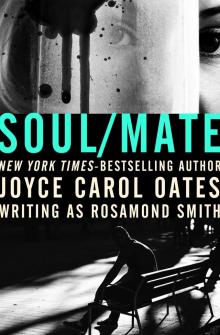 Soul/Mate
Soul/Mate The Sacrifice
The Sacrifice The (Other) You
The (Other) You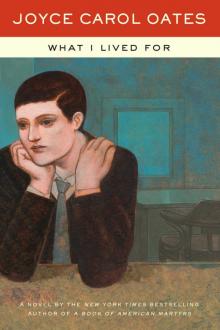 What I Lived For
What I Lived For Prison Noir
Prison Noir High Crime Area: Tales of Darkness and Dread
High Crime Area: Tales of Darkness and Dread Faithless: Tales of Transgression
Faithless: Tales of Transgression Give Me Your Heart: Tales of Mystery and Suspense
Give Me Your Heart: Tales of Mystery and Suspense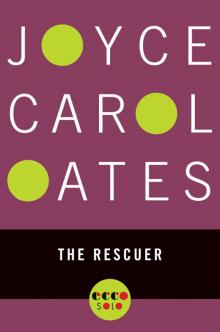 The Rescuer
The Rescuer A Book of American Martyrs
A Book of American Martyrs American Melancholy
American Melancholy Double Delight
Double Delight Big Mouth Ugly Girl
Big Mouth Ugly Girl Bellefleur
Bellefleur Solstice
Solstice Big Mouth & Ugly Girl
Big Mouth & Ugly Girl Evil Eye
Evil Eye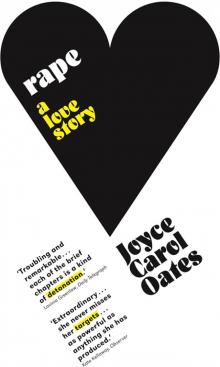 Rape
Rape The Man Without a Shadow
The Man Without a Shadow Missing Mom
Missing Mom My Sister, My Love
My Sister, My Love The Gravedigger's Daughter
The Gravedigger's Daughter Beautiful Days
Beautiful Days The Lost Landscape
The Lost Landscape Daddy Love
Daddy Love Dreams from the Witch House: Female Voices of Lovecraftian Horror
Dreams from the Witch House: Female Voices of Lovecraftian Horror The Tattooed Girl
The Tattooed Girl Give Me Your Heart
Give Me Your Heart In Rough Country
In Rough Country The Journal of Joyce Carol Oates
The Journal of Joyce Carol Oates Black Dahlia & White Rose: Stories
Black Dahlia & White Rose: Stories High Crime Area
High Crime Area Lovely, Dark, Deep
Lovely, Dark, Deep A Widow's Story
A Widow's Story Soul at the White Heat
Soul at the White Heat Wild Nights!
Wild Nights!